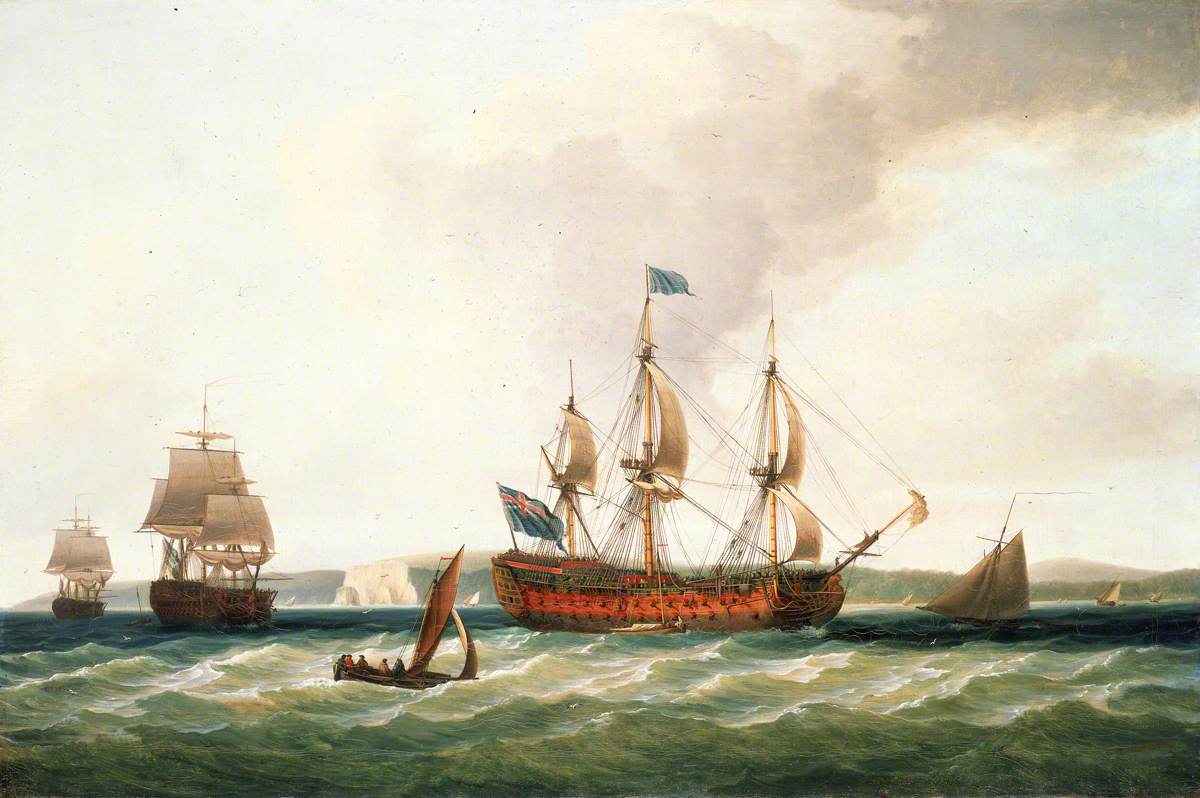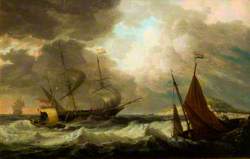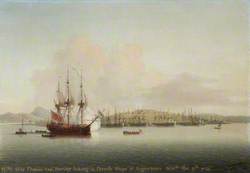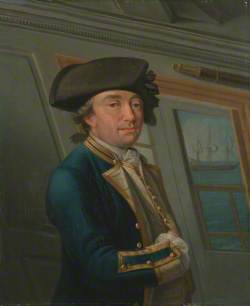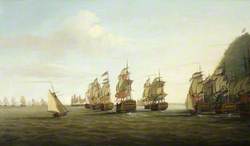How you can use this image
This image can be used for non-commercial research or private study purposes, and other UK exceptions to copyright permitted to users based in the United Kingdom under the Copyright, Designs and Patents Act 1988, as amended and revised. Any other type of use will need to be cleared with the rights holder(s).
Review the copyright credit lines that are located underneath the image, as these indicate who manages the copyright (©) within the artwork, and the photographic rights within the image.
The collection that owns the artwork may have more information on their own website about permitted uses and image licensing options.
Review our guidance pages which explain how you can reuse images, how to credit an image and how to find images in the public domain or with a Creative Commons licence available.
Notes
Add or edit a note on this artwork that only you can see. You can find notes again by going to the ‘Notes’ section of your account.
This 100-gun First-Rate was launched at Woolwich Dockyard in 1756. It was the first to be built in the eighteenth century without a poop-royal which was a short deck above the after end of the poop where the master or pilot had his cabin. George III visited the 'Royal George' at Portsmouth while it was under construction, and she was Sir Edward Hawke's flagship at the Battle of Quiberon Bay in 1759, when the French fleet under Admiral de Conflans was largely destroyed and a threatened French invasion plan averted. This was regarded as an heroic action since the battle took place during a gale among the treacherous shoals and rocks off the Brittany coast. The 'Royal George' continued as Hawke's flagship for the rest of the Seven Years War and is here shown flying the flag of an Admiral of the Blue off the Needles at the western end Isle of Wight.
On the morning of 29 August 1782 while lying at Spithead, the ship was listed slightly to port, the guns being run out on that side so that the carpenter could make a repair on the starboard side at the waterline. At the same time, a hoy came along the port side to deliver stores. The weight of the stores increased the list to port to the point where water began to come in over the sills of the lower deck gun ports. The ship then rapidly filled and sank with the loss of about 900 lives, many being women and children. Kempenfelt also perished. It was the scandal of the age and was commemorated in a well-known poem by William Cowper: Toll for the Brave/The Brave that are no more/All sunk beneath the wave/Fast by their native shore'.
'The Royal George' is shown flying the ensign. Other shipping is shown on the left together with a small yacht to the right. The ship is moving up the Channel and the white cliffs of the south coast are shown in the background.
Title
The 'Royal George' and Other Vessels
Date
1778
Medium
oil on canvas
Measurements
H 90 x W 133.5 cm
Accession number
BHC3604
Work type
Painting
